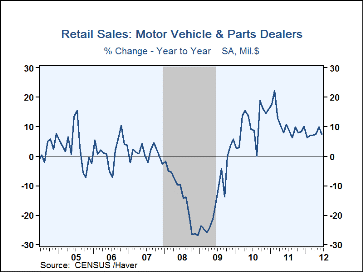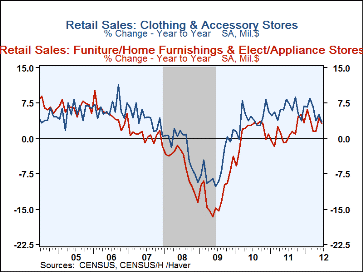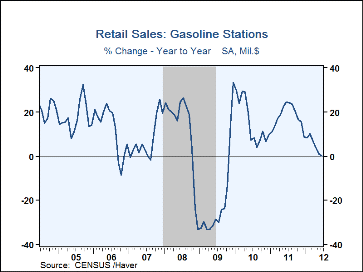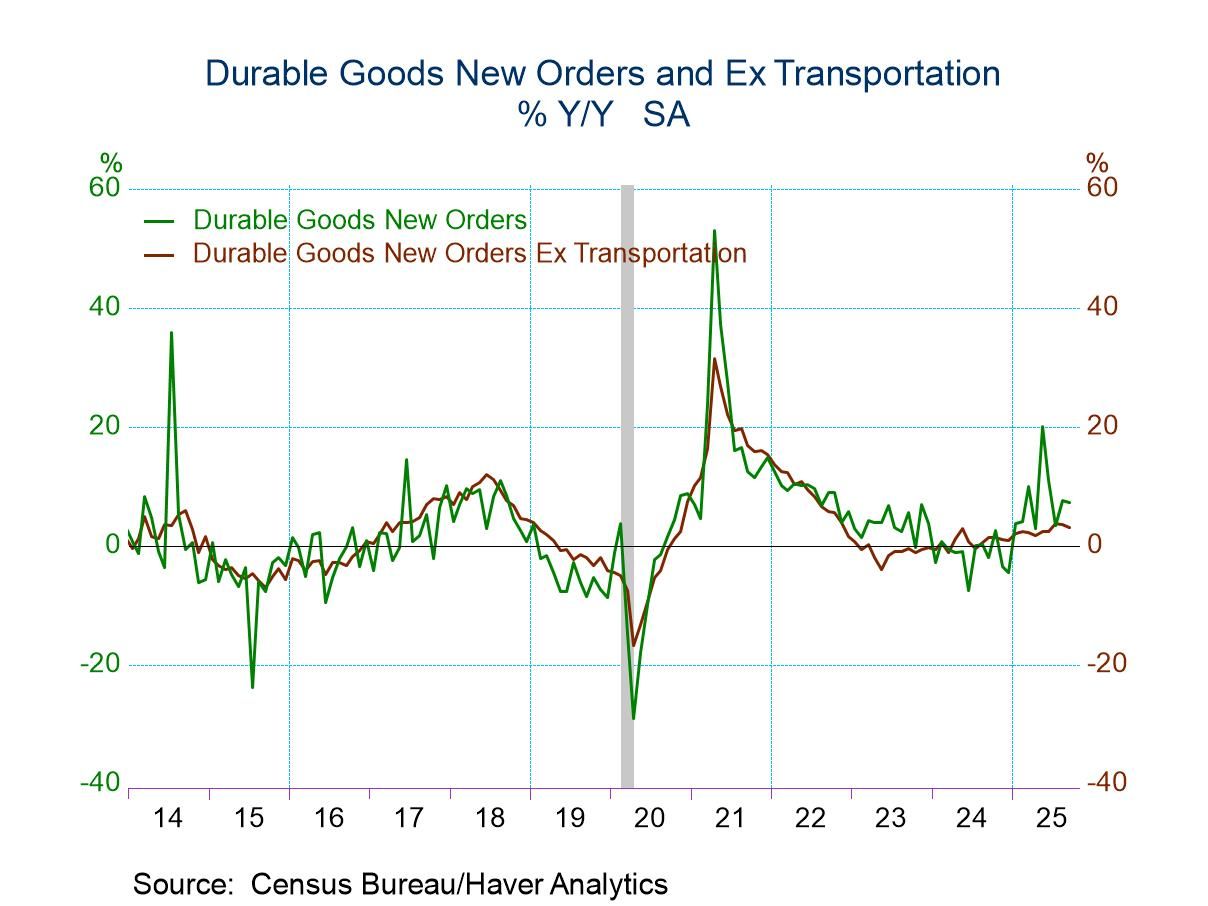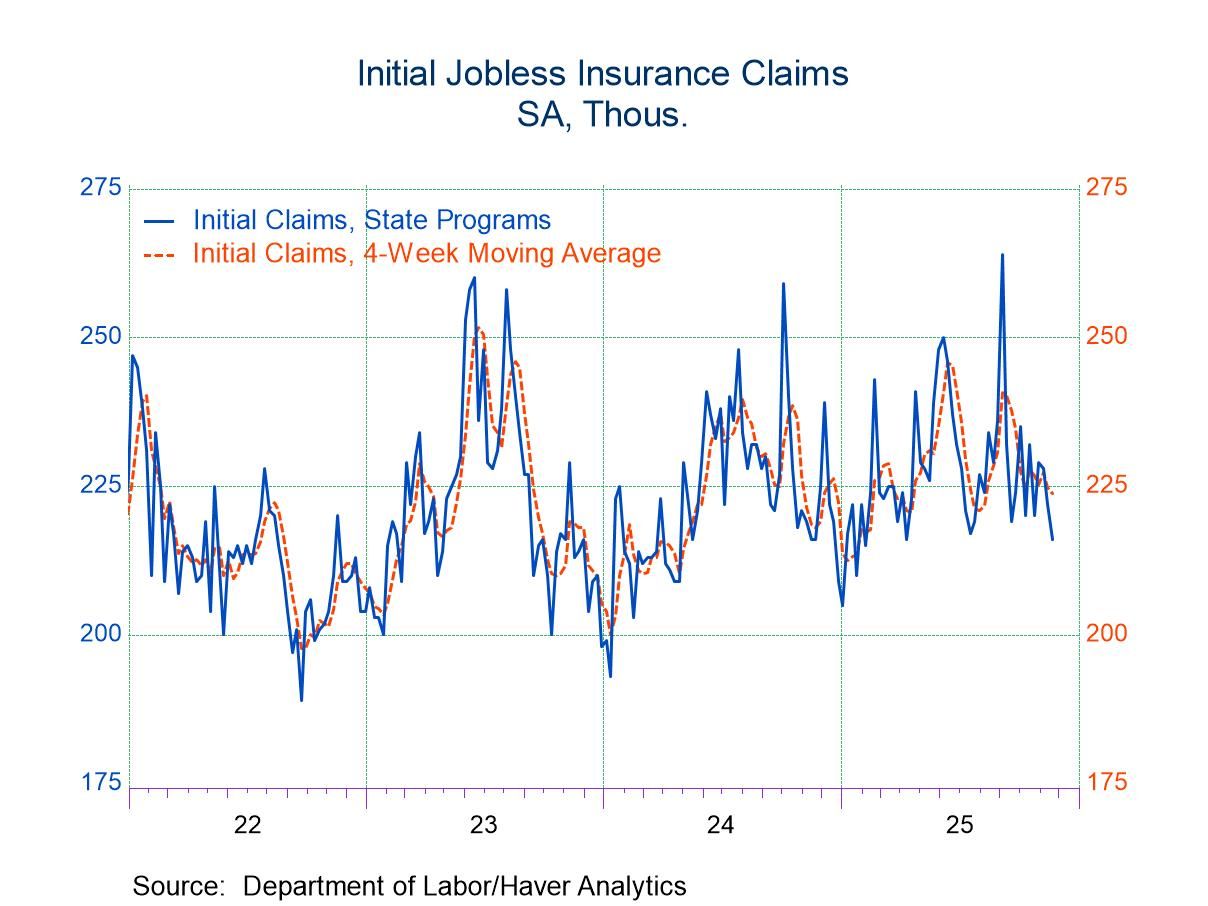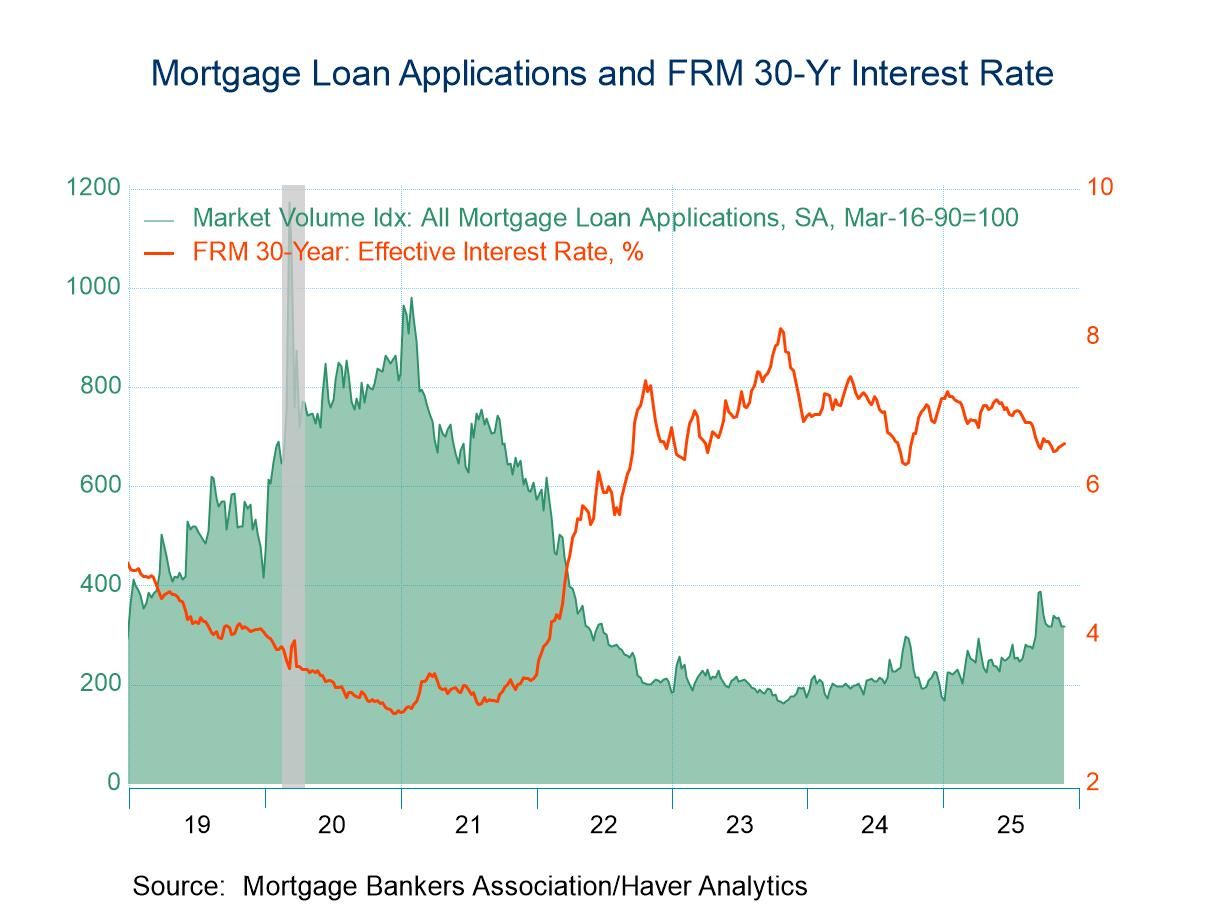 Global| Jul 16 2012
Global| Jul 16 2012U.S. Retail Sales Unexpectedly Weaken Further
by:Tom Moeller
|in:Economy in Brief
Summary
For the first time since 2008, retail sales fell for a third consecutive month. During June, retail sales declined 0.5% after an unrevised 0.2% May slip. April's decline was revised to -0.5% from -0.2%. A 0.1% uptick in June sales was [...]
For the first time since 2008, retail sales fell for a third consecutive month. During June, retail sales declined 0.5% after an unrevised 0.2% May slip. April's decline was revised to -0.5% from -0.2%. A 0.1% uptick in June sales was expected according to Action Economics. Sales declined across-the-board last month. Auto sales fell 0.6% (-7.3% y/y) compared to a 2.2% (21.8% y/y) increase in unit sales reported earlier this month. Excluding autos, retail sales fell 0.4%, down for the third successive month. Expectation were for no change.
Notable weakness in sales overall was provided by building materials, off 1.6% (+0.6% y/y) last month and off sharply for three successive months. Also, lower gasoline prices caused a 1.8% decline (+0.1% y/y) rise in purchases at service stations. Less autos, building materials and gasoline, retail sales slipped 0.1% in June. The 3.2% y/y increase is half the gain during 2011.
Discretionary spending weakened last month as indicated by a 0.8% drop (+7.8% y/y) in furniture & home furnishing sales while electronics & appliance store sales also fell 0.8% (-1.0% y/y). General merchandise sales fell 0.2% (-0.3% y/y), the third consecutive month of decline. Also to the downside by 0.7% (+0.6% y/y) were health & personal care store sales. Food service & drinking place sales also were down 0.2% (+6.3% y/y). Sales of apparel rose 0.2% (3.5% y/y) while food & beverage store sales rose 0.1% (2.5%).
The retail sales figure are available in Haver's USECON database. The Action Economics figures are in the AS1REPNA database.
| Retail Spending % | Jun | May | Apr | Jun Y/Y | 2011 | 2010 | 2009 |
|---|---|---|---|---|---|---|---|
| Total Retail Sales & Food Services | -0.5 | -0.2 | -0.5 | 3.8 | 8.0 | 5.5 | -7.1 |
| Excluding Autos | -0.4 | -0.4 | -0.6 | 3.0 | 7.4 | 4.5 | -5.7 |
| Retail Sales | -0.5 | -0.2 | -0.6 | 3.5 | 8.2 | 5.8 | -7.9 |
| Motor Vehicle & Parts | -0.6 | 0.8 | -0.2 | 7.3 | 10.9 | 10.8 | -13.9 |
| Retail excluding Autos | -0.5 | -0.4 | -0.7 | 2.5 | 7.6 | 4.7 | -6.4 |
| Gasoline Stations | -1.8 | -2.0 | -1.7 | 0.1 | 17.8 | 14.7 | -22.0 |
| Non-Auto Less Gasoline | -0.3 | -0.1 | -0.6 | 3.0 | 5.9 | 3.2 | -3.4 |
| Food Service | -0.2 | -0.3 | 0.4 | 6.3 | 5.9 | 3.2 | -0.9 |
Tom Moeller
AuthorMore in Author Profile »Prior to joining Haver Analytics in 2000, Mr. Moeller worked as the Economist at Chancellor Capital Management from 1985 to 1999. There, he developed comprehensive economic forecasts and interpreted economic data for equity and fixed income portfolio managers. Also at Chancellor, Mr. Moeller worked as an equity analyst and was responsible for researching and rating companies in the economically sensitive automobile and housing industries for investment in Chancellor’s equity portfolio. Prior to joining Chancellor, Mr. Moeller was an Economist at Citibank from 1979 to 1984. He also analyzed pricing behavior in the metals industry for the Council on Wage and Price Stability in Washington, D.C. In 1999, Mr. Moeller received the award for most accurate forecast from the Forecasters' Club of New York. From 1990 to 1992 he was President of the New York Association for Business Economists. Mr. Moeller earned an M.B.A. in Finance from Fordham University, where he graduated in 1987. He holds a Bachelor of Arts in Economics from George Washington University.



